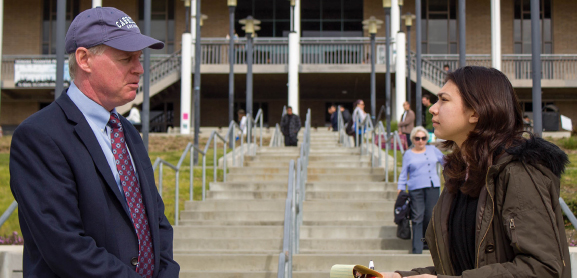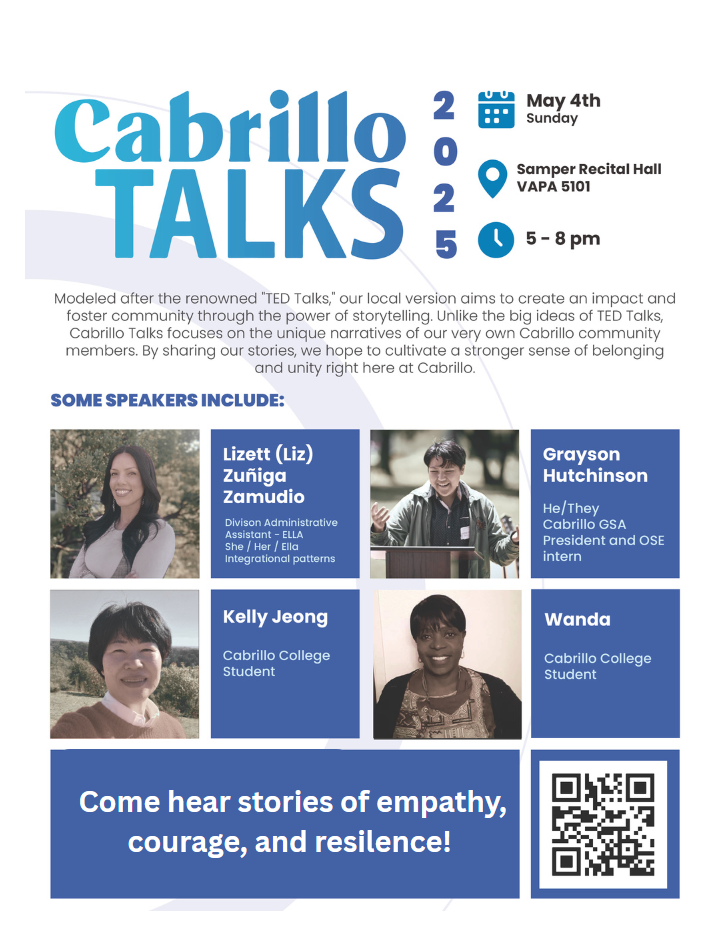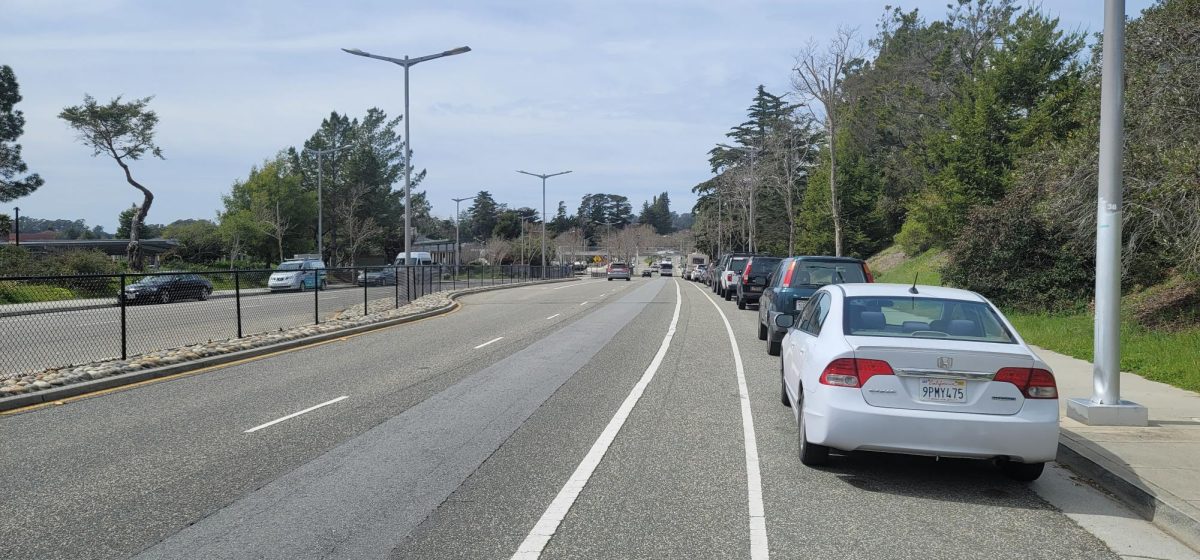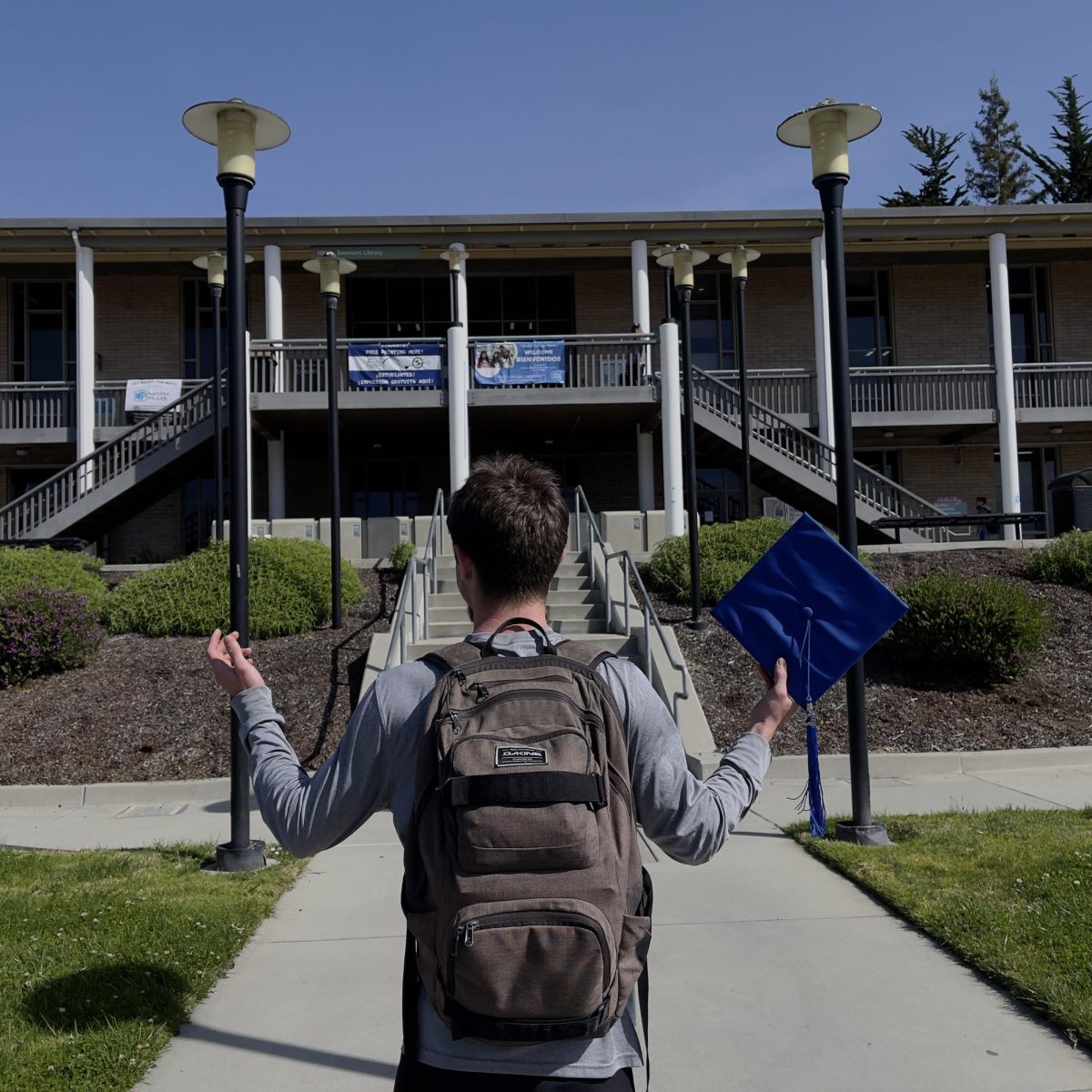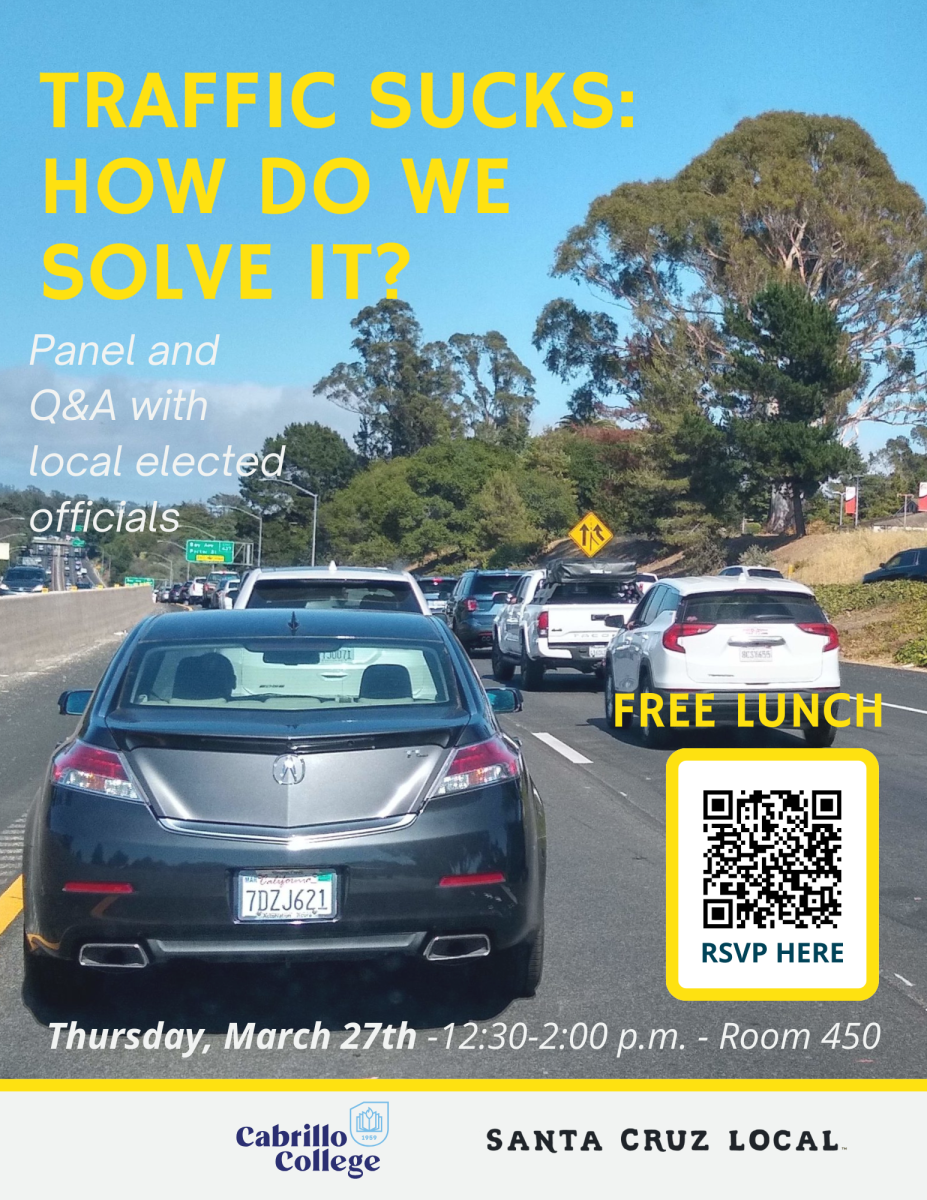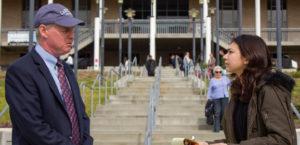
What brought you to Cabrillo College?
I had been at Delta College in Stockton for almost 22 years. I had gotten to know people at conferences throughout the state who worked at Cabrillo, and I had always been impressed by the faculty and managers I had interacted with. Plus it’s Santa Cruz, Aptos; it’s a beautiful environment, beautiful place to work, and the reputation of the college was quite strong in my mind. It was a very attractive place to apply to, in my mind.
What were some of the strengths you saw in our campus when you first arrived?
The faculty had a great set of data tools; such as dashboards that faculty could use to review student success. I also found that Cabrillo College is a Hispanic-serving institution: we have a large population–over 40 percent–of Hispanic students enrolled. It’s very similar to the college I’m from. I was excited to know that this was an environment where I could be contributing support to first-generation students who are coming to college. Finally, while there is room for improvement, the success rates for the college overall are good. There was a whole package of things Cabrillo College had that brought me here; the success, the innovations, and some familiarity to what I had done at Delta College.
Some students are concerned with the pressure to complete their education goal in two to three years. How can we support students – such as students who are parents, or students who face some inaccessibility to the college – to meet their own education goals?
There are two ways to think about Guided Pathways. The typical way that Pathways is talked about is: a design to help students choose a career path and a major, stay on that path, and focus on their directed work, completing it in a timely manner. For full-time students, it’s fantastic because if we do it right as a college, we’ll have a set schedule and program course path that is going to march them right through. That’s the track where we’re going to get full-time students to transfer, or to a career, as soon as possible. Part-time students can also benefit from the map, but the course sequencing might be different for them because they have to work, or have family responsibilities, but it doesn’t negate the utility of having a program course path.
I’d think of it as a GPS versus a road map. In this analogy, in older days, you’d have a map you’d have to wrestle with and figure out where you’re going. Now, you have a GPS that is going to tell you how to get from A to B through two or several different routes.
I’ve worked at community colleges long enough to know that a lot of students have to work, and have other obligations besides being a student. It doesn’t mean that Guided Pathways doesn’t work for them as well. I am a supporter of the framework that Guided Pathways has to offer for students.
How can we encourage enrollment?
When I go talk to people in the community, just buying stuff at the store, I find that people love the college. They say things like “Cabrillo’s great, I went there, and I had a good time.” We have a good reservoir of reputational prestige in the community for what we’ve done and have been doing.
In terms of growing and what we can do, one of my areas of interest is increasing dual enrollment in high schools. We can expand our course offerings for high school students. It’s effective in two ways: One, it helps those students start building their own college transcripts and begin envisioning themselves as college students at an earlier age. The national studies show those students do really well in those courses, and they complete them at a higher rate than students who don’t begin that early.
Second, we can continue to fortify our relationship with K-12 schools. There are public school students we want to see as incoming Cabrillo students. The more we offer courses at the high school setting, the better we’re going to be.
There are also opportunities for adult education with non-credit, job-seeking students that might benefit all of the students as well.
How can the campus continue to engage in equity with the faculty and the students?
One of my roles is to try to make the faculty and staff as reflective of the community as possible. We’re currently underrepresented in our ranks at this point. If I’m not able to hire people who are Hispanic or African Americans, I’m hiring people that can tap into an equitable consciousness, and at minimum, can understand what it’s like to be a first-generation college student.
You can begin to tap into that through the interview process. The other way to approach it is to consciously create positions that attract people from underrepresented ranks.
At Delta, we had designed a position for African American History, and Mexican American History, because people who are likely to teach those courses are coming out of that population of students.
We were able to hire a gentleman who had come from a historically black college and happened to be teaching part-time in the Bay Area, and we had gotten him full-time. Then for Mexican American History, we recruited a woman from UC Riverside with a PhD. You can generate positions that are going to bring people from those ranks. You can create positions that are going to generate greater diversity within the faculty.
Our last president attempted to pass a $310M bond during our last county elections, and it failed at the ballots. Are you planning to pursue the same bond?
I don’t know that we would do the same bond, but we’ve talked internally with the bond task force, who is beginning to collect some public opinion. Then we’re going to share it with the Board of Trustees. The likelihood of the college going for a bond immediately is not very high. We need a little bit of space from this last one, and the college needs to regroup. The value of the bond may change, and how much we ask depends. 2020 will definitely be the best time horizon for that. The best opportunity will be in November 2020, when voter turnout is highest.
What do you have in store for Cabrillo? What’s your 5 to 10-year-plan for the college?
I think it’s a mistake for a leader to come into an institution and say, “Here’s my 5-year-plan.” That 5 year plan should be developed with the college. That shouldn’t be a “me” plan; that should be a “we plan.” It will be something that is organic, and that faculty input has to be there.
For me to force my plan would be completely disruptive. I don’t want to devalue the work the college has already done. Whatever we come up with in 5 years, we should have already successfully implemented Guided Pathways. Committing to this plan means that in 5 years from now, you will have a different look and feel to the college.
The other thing would be bringing out the Student Resources and Support Center and integrating careers and resources into the classes and campus.
I want career advice pouring into the classroom. I want students to have a clear understanding of their career options available to them, the kind of money they can make, where they can transfer to, and that shouldn’t be in a separate office.
The rates of completion of associate degree of transfer (AAT) and 4-year institution transfers is not good enough at this college. I want it to be higher. We should have more students transferring to UCSC. The partnerships between the departments should be deeper.If UCSC and CSU Monterey Bay are our highest transfer rates. I also want to remind students they can transfer anywhere. There are an immense amount of transfer opportunities offered across the country.
What advice would you give to students who want to follow a career path toward college and university administration?
I want students to be open to career changes. Don’t be opposed to transforming yourself, or professional development.
Through my life, I’ve been a lifeguard, a security guard, a swim coach… I did polling work in graduate school. My career path pivoted from journalism to educational planning. Then I was a faculty member, to a dean for planning and research, then a vice president, and now a college president. I can attribute my advancements through my education and professional development.
Professional development is a never-ending staircase. I’ve done leadership training at every level of my career. I’ve even ben in workshops for how to foster transformative change in the last two years. The key is to never think of yourself as a non-student.

